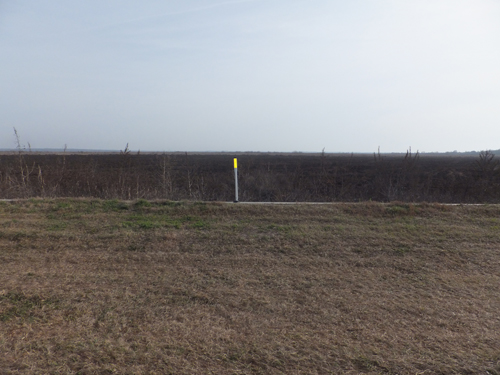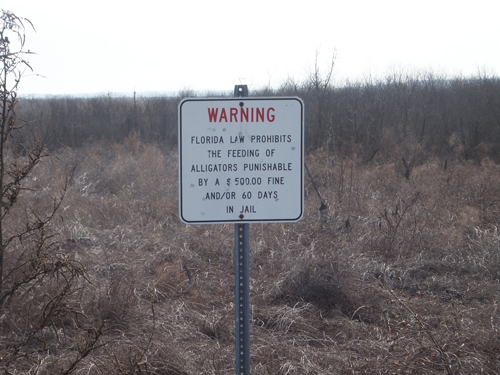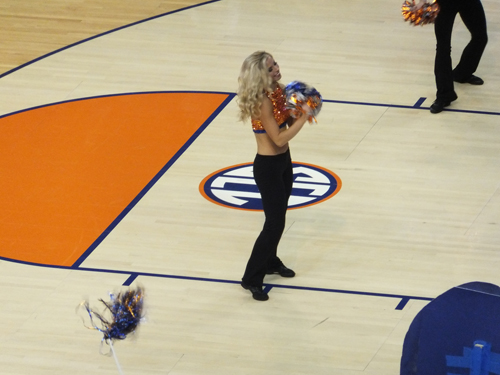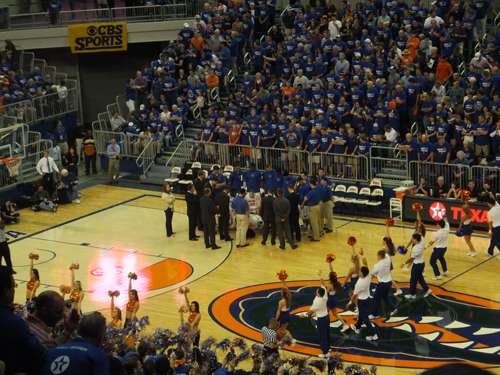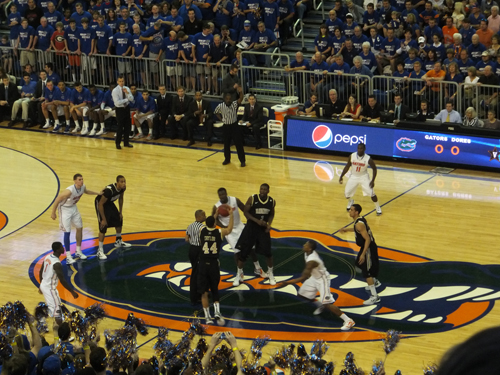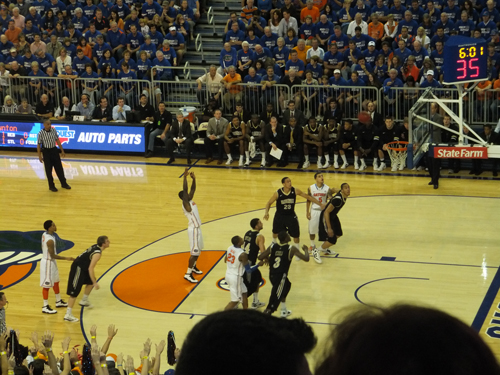This is a story about my trip to Gainesville on February 4. It’s going to have to be split into 2-parts because it is not just about the Gator basketball game I attended, it also encompasses the tragic crash 0n I-75 at the end of January. That’s in this part. The next one will be about Old Florida - Cross Creek and Micanopy. While this will touch briefly on Cross Creek, it won’t say anything about Micanopy, which is the oldest inland settlement in the state. This post will be heavy with photos. Most can be enlarged.
HISTORY AND THE OLD SOUTH
Ever since I was a young boy, I’ve had a keen interest in history. Growing up in New Jersey, it was impossible to miss because the area is rich with stories of days gone by. Much of the Revolutionary War was fought in my own back yard, for instance, and before that was the French & Indian War of the 1750s.
While libraries are teeming with books on history, my affection for it lays somewhere else, deep within my mind. I seek the presence of history. I like to sense it all around me. Although not an obsession, I often wonder, as I walk about, who took the same steps one hundred years before me; a thousand and more years earlier, and I yearn to learn, because I can only guess as far back as our history books tell us. I know there’s more than that.
Growing up, it was easy to explore our heritage. Where I lived was just northwest of Princeton, and that made it somewhat simple to visit historical sites and museums from Philadelphia to New York City and everywhere in between. Every so often, I’d hear news about the skeletal remains of a Redcoat and his musket being discovered in the rafters of an old house while it was being renovated. I lived in several homes that dated back to a generation or two before the Revolutionary War. The church where my late grandfather preached was established in 1733.
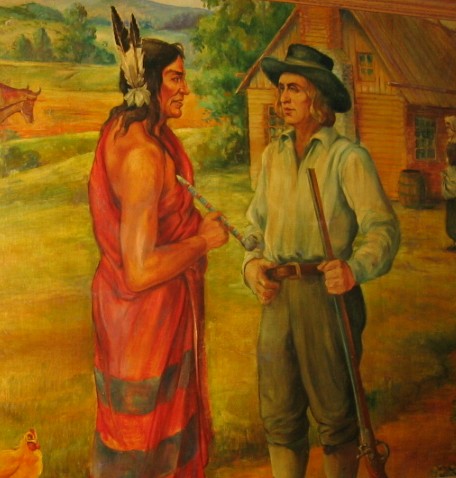 Some of you may find me morbid for this, but I’ve always liked to walk through old cemeteries. I’d look at the names and dates on the tombstones and wonder who they were in life. What did they do? Were they friendly? Who did they leave behind? In my own hometown of Flemington, there is a small tract of land up the street from where I lived known as the Case Family Burial Ground. Several members of the Case family are resting there, along with a Delaware Indian chief named Tuccamirgan, who died in 1750. The grave was dug deep enough for him to be placed in a sitting position, facing east.
Some of you may find me morbid for this, but I’ve always liked to walk through old cemeteries. I’d look at the names and dates on the tombstones and wonder who they were in life. What did they do? Were they friendly? Who did they leave behind? In my own hometown of Flemington, there is a small tract of land up the street from where I lived known as the Case Family Burial Ground. Several members of the Case family are resting there, along with a Delaware Indian chief named Tuccamirgan, who died in 1750. The grave was dug deep enough for him to be placed in a sitting position, facing east.
While I am quite intrigued by my humble beginnings, I am just as fascinated with the American Civil War. Of course, being a Yankee and all, I never could get a firm grasp on the Confederacy until I moved to Florida. We were never taught to hate southerners, but we were aware that many southerners were raised to hate northerners — so we thought. It wasn’t all that many years ago when the ‘colored folk’ used separate water fountains and bathrooms in the south. When I moved to the Orlando area in ‘81, I didn’t know what to expect. To me, the Civil War ended over a century ago, so there was nothing more to it than history. Every so often, I’ll hear about how the war has never ended and that the south will one day rise again, but for what reason? To what end? Instead, I like to focus on the rich culture of the south, and that’s something I was never taught in school. It’s not anything that could be taught in school. You must live it in order to feel it.
I’ve been in central Florida for 31 years now, longer than I lived up north and I’ve got to say, I like it here. No, that doesn’t mean I’d ever give up on my home town or state, and Orlando’s not known as a bastion of Old Florida, but there’s definitely something romantic about pockets of the south. I guess you could say the bug caught me during a screening of Gone With The Wind during my freshman year of high school in, of all places, New Jersey.
There was a land of Cavaliers and Cotton Fields called the “Old South.” Here in this pretty world, Gallantry took its last bow. Here was the last ever to be seen of Knights and their Ladies Fair, of Master and of Slave. Look for it only in books, for it is no more than a dream remembered, a Civilization gone with the wind…
- From the opening of the film Gone with the Wind (1939)
While I don’t sense anything genuinely historical about Orlando, I have found the ‘Deep South’ — through north Florida, Georgia, Alabama, Louisiana, and Mississippi — to be both mythical and mystical. There’s no way to explain it in a sentence or two. It’s something that has to grow on you. The bug next caught me when I flew to New Orleans on a private jet back in the early 90s. I felt something tragic about the city but I could never pin it on anything. As festive as the place was, an innate sense of sadness always seemed to be right around the corner, on the other side of the wrought iron gate.
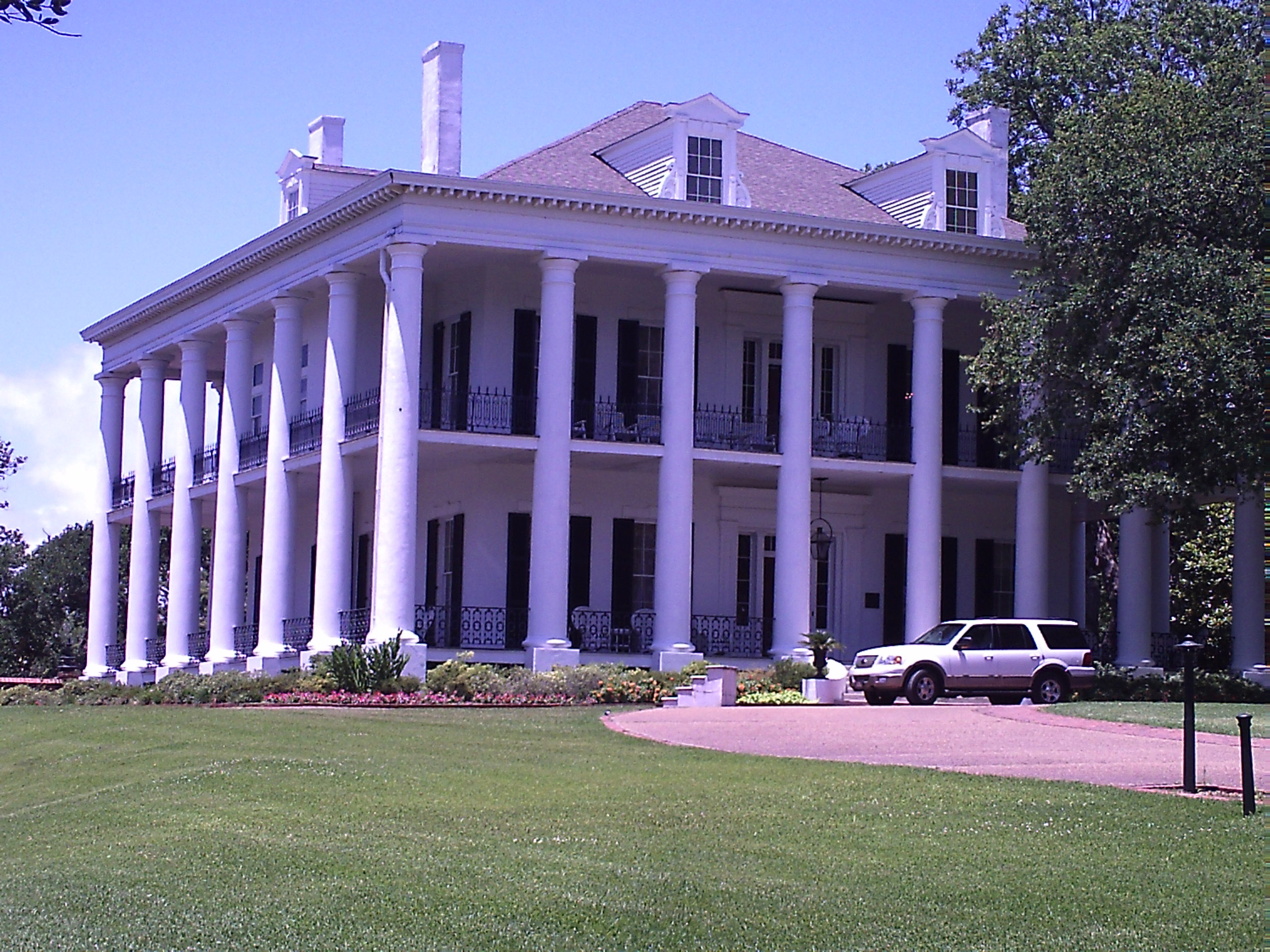 I’ve since been back to New Orleans, but I’ve also traveled to and visited other towns from here to Houston. One of my favorite stops was Natchez, Mississippi, rife with tales of the Civil War. This story, however, is not about the war between the states, this is about one state, and it’s called Old Florida, home of majestic magnolias, stately live oaks and cypress trees jutting up from the water. However, there are two issues to cover first.
I’ve since been back to New Orleans, but I’ve also traveled to and visited other towns from here to Houston. One of my favorite stops was Natchez, Mississippi, rife with tales of the Civil War. This story, however, is not about the war between the states, this is about one state, and it’s called Old Florida, home of majestic magnolias, stately live oaks and cypress trees jutting up from the water. However, there are two issues to cover first.
Many of you are familiar with Nika1. She is a frequent contributor on my blog and a good friend. About a month ago, she asked me if I’d be interested in going to a live Gator (University of Florida) basketball game with her. Yes! Of course I would! I’ve been to several football games, but never basketball, something I’ve always wanted to do. I first went to see Nika1 in late September of 2010, when she invited me up for a football game. While there, she took me around the neighborhood. That included the rural area where she lives, and where her family has lived for many generations. Once again, I sensed the old south, but in this case, it was Old Florida, and its roots were deep in history.
Three weeks ago, on February 4, I drove up to the house she shares with Ali Rose, her beautiful Australian Shepherd. She had plans for me, too. After the basketball game, we were going to go to Cross Creek, made famous by The Yearling, the 1938 novel written by Marjorie Kinnan Rawlings. She won the Pulitzer Prize for it in 1939. Fascinating, I thought. Very much so.
ANATOMY OF A TRAGEDY
Almost a week before my drive, a terrible accident happened on I-75, in the middle of Paynes Prairie. 11 people died. To help you understand Paynes Prairie, it is generally a swampy area, but the weather has been exceedingly dry in Florida, and in this state, droughts breed brush fires, and lots of them. Many burn out of control.
Burned Brush in Background
On the way up to the game on US-441, Nika1 told me what happened. 441 is east of 75 and they run parallel to each other. The fire started east of 441. The first series of accidents began just before midnight, on January 28. Smoke and fog wafted west across the highways and the first 911 call came in at 11:53:14 from I-75 to report the heavy smoke and fog. Moments later, another 911 caller reported hearing accidents. Then, another one came in saying they saw the accidents. Moments later, all traffic was stopped.
Those accidents were not fatal, but it prompted the Florida Highway Patrol to shut down the interstate by 12:45 am. At 3:21 am, the decision was made to reopen it, and the rest is history. By 4:00 am, you couldn’t see past your nose. Heading southbound, a semi had stopped in the right lane and a Dodge pickup truck plowed into it, followed by a Ford Expedition. The two Ford occupants were able to escape through the back just before it burst into flames. The occupants in the pickup truck were on their way to a funeral, but sadly, all three family members perished.
By now, frantic calls were coming into the Alachua County Communications Center. Of course, when troopers, sheriff’s deputies and emergency vehicles arrived, they couldn’t see, either.
In the northbound lanes, two church vans were heading to Georgia. One van crashed into the rear corner of a semi stopped in the middle lane and it sliced through the van, killing five family members. One 15-year-old girl survived. The occupants of the other van survived. In front of the semi was a Toyota Matrix sandwiched between that one and one in front of it. The young couple in the Matrix died.
Meanwhile, another semi had stopped in the middle southbound lane. It was hit by a Dodge pickup and the driver was able to escape with minor injuries. Then, a Pontiac Grand Prix smashed into the back of that pickup and the driver died.
Had the drivers of those semis pulled off of the road instead of stopping in the lanes, would lives have been saved? You bet, but it will be a long time before the investigation into this tragedy is sorted out. That includes why FHP decided to reopen the interstate after it was closed.
What surprised me was that the fire burned east of 441. Nika1 told me another person died on that highway, but it didn’t make headlines like the big one.
The above photo represents what Paynes Prairie would look like during normal weather conditions.
GO GATORS!
As much of a horror as the accident was, there was a basketball game to attend, and the Gators intended to win it. This was, after all, why I took the trip to begin with, not including my visit with Nika1. The team was playing Vanderbilt. We had gotten there in plenty of time to nestle into our seats, where brand new t-shirts were nicely folded for spectators. Yes, FREE! Blue in color, the back had the Texaco logo and some type, and the front said “ROWDY yet refined REPTILE” with the Gator green and orange logo. It was a great game to watch and it was made better by the Gator’s victory. The final score was 73-65. The pictures can do the talking…
The first photo is the University of Florida Century Tower in Gainesville. Begun in 1953, it is 157 feet (48 m) tall.
Part 2 will come next week and it will take you through Old Florida and a Michael J. Fox movie. Mostly, it will be a selection of photographs I took.
